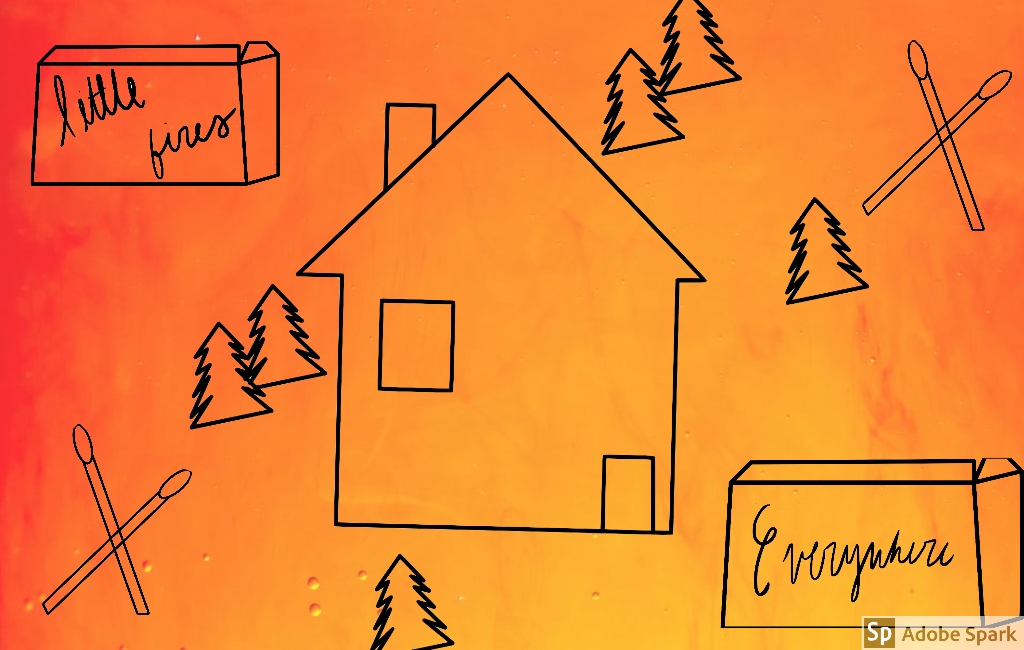Beyond The Page: Finding Connections in “Little Fires Everywhere”
Similarities between Celeste Ng's "Little Fires Everywhere" and Florida's Hillsborough County
May 4, 2020
Mothers know best. I cannot vouch for the deeds of Elena Richardson and Mia Warren, but in matters concerning literature, my mother is sure to offer a valid read.
Per her recommendation, “Little Fires Everywhere” was not to be missed. Bearing in mind that I had yet to quash my reading rut, the novel’s modest length had done enough to pique my interest.
For those unfamiliar with the work of Celeste Ng, “Little Fires Everywhere” (much like Rowling’s snitch) opens at the close: Elena Richardson, Ng’s protagonist it would seem, awakes to the pungent odor of her house ablaze.
Alas, Ng’s narrative (albeit fictitious) is not one of redemption, but rather that of slow-burning corruption.
Eleven months preceding the supposed arson, Elena Richardson is introduced to Mia and Pearl Warren, an enigmatic mother-daughter duo leasing Elena’s familial property. Elena’s relationship with her tenants soon strains as Mia’s disregard for the status quo threatens to upend the strait-laced clique of Shaker Heights.
Having familiarized myself with both Shaker Heights and its residents, it has become difficult to ignore the rather stark similarities between Ng’s chosen setting and our very own Hillsborough County.
Societal parallels are as follows:
Shaker Heights is predominantly composed of white residents.
Despite Hillsborough’s recovery post-stock recession (circa 2008), black ownership rates within the Bay area have dropped to 32%, whereas the rates of white homeowners have remained well over 70%. Lou Brown, a retired African-American realtor, credits the depreciation to the practices of “steering” (directing clients to or away from certain areas on account of their race) and “redlining” (denying property loans within specified areas).
Shaker’s residents are of the upper-middle class.
The Tampanian’s average income ranges between $50- and $55,000 annually. For reference, salaries of the middle-class begin at $40,000 per year.
The men of Shaker Heights are the primary breadwinners within their respective households.
In a report published by the Florida Philanthropic Network, a county-level analysis has placed Florida in the 36th percentile nationally in regards to its female labor force— the 36th percentile averages to perhaps a D+. Of the 10,170,011 females residing within Florida, 53.7% partake in the workforce. The graph below depicts Florida’s female labor rankings comparative to the other 49 states:

Floridian women typically earn a minimum of $10,000 less than their male counterparts. It is believed that if women were to receive equal pay (short by just 12.5 cents), the average woman’s annual income would increase by 16%.
Sixteen years ago, I was dealt an advantaged deck of cards: white; female; upper-middle class. Never once have I questioned the food on my plate, nor the roof over my head. Never once have I feared I would be denied services purely for the color of my skin.
Much like Lexie, Elena’s eldest daughter, I am a mere beneficiary of both lineage and my family’s good fortune.
Of course, “Little Fires Everywhere” had not been composed (solely) for the sake of exploiting Shaker’s pretentious caliber. Ng narrated the lives of both Elena and Mia in an attempt to unveil the American facade; the societal notion that one’s success is predetermined by both their ethnicity and gender. In doing so, Ng has challenged our innocent delusions and encouraged readers to embrace humanity’s dissimilarities.
Perhaps Ng’s arsonist shall remain fictional, yet’s who to say we have not set our own little fires in bouts of ignorance? Antipathy? As we return to a state of normalcy (post-Covid-19), who’s to say perverse tweets will not adorn the covers of mass media yet again? Come August, who’s to say petty drama will not linger amongst the students of the Academy?
Who’s to say it is not us with ash on our hands?

